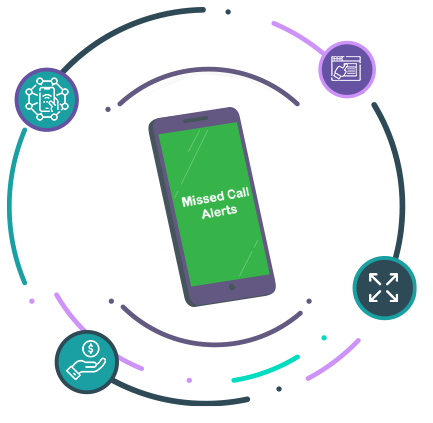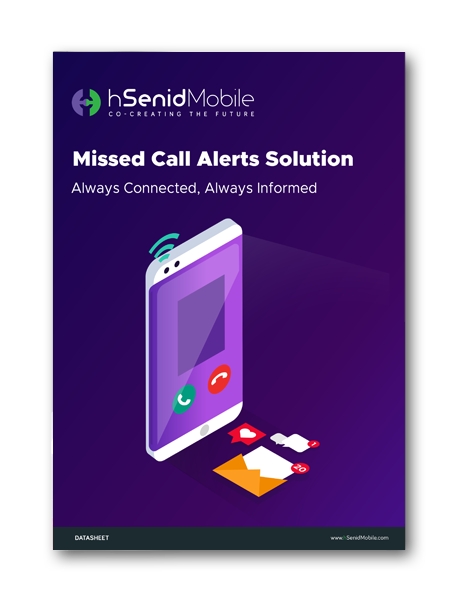In the fine print of customer engagement, missed call alerts write the
chapters you don’t see. Each unreturned ring is a data point declaring someone
needed you, whether they’re on the verge of a purchase, facing an urgent
issue, or simply seeking reassurance. These flashes on your dashboard carry
real-time intelligence about intent and opportunity. By treating them as
active signals, invitations rather than nuisances, you unlock hidden pathways
to satisfaction and loyalty. Transforming missed calls from silent failures
into strategic wins begins with a mindset shift: viewing every alert as the
first step in a dialogue you can’t ignore.
Overlooking missed call alerts carries both tangible and intangible costs.
On the financial side, research shows that businesses can lose up to 10 percent of potential sales when callbacks are delayed or ignored. In high-stakes industries such as real estate, healthcare, or B2B services, each lead might represent thousands of dollars in revenue. Beyond immediate sales losses, there are opportunity costs tied to reduced customer lifetime value: a frustrated caller who experiences poor responsiveness is far less likely to return for repeat business.
The brand impact can be equally damaging. Today’s customers are quick to share negative experiences online, and a single social-media post or review highlighting poor phone support can deter hundreds of prospective customers. By neglecting missed call alerts, companies risk ceding ground to competitors who capitalize on prompt and attentive customer outreach.
Effective management of missed calls hinges on a multi-pronged approach that combines technology, process, and people.
The landscape of business communication is evolving rapidly, driven by digital transformation and shifting customer preferences. While voice remains indispensable for urgent matters, many organizations now embrace omnichannel strategies integrating email, live chat, SMS, social media, and even messaging apps like WhatsApp Business to meet customers on their preferred platforms. Artificial intelligence (AI) and machine learning are transforming missed call workflows through sentiment analysis, intent prediction, and personalized callback recommendations. Additionally, self-service portals and conversational bots handle routine inquiries, flagging only high-value or complex calls for human attention. Businesses that unify data across channels and adopt these emerging trends gain a competitive edge in responsiveness, customer satisfaction, and operational efficiency.
In summary, every missed call alert represents more than a skipped ring; it signals a fragmented customer experience that can erode revenue, damage brand reputation, and weaken long-term loyalty. By implementing robust call-tracking systems, simplifying voicemail workflows, and embracing thoughtful, personalized follow-up strategies, businesses can turn these silent warnings into opportunities for engagement and growth. Staying ahead of communication trends like AI-driven insights, omnichannel integration, and self-service automation ensures you never miss a beat when your customers reach out.
hSenid Mobile’s Missed Call Alerts Solution brings all of these elements together, automating call capture, surfacing real-time insights into caller intent, and ensuring every inquiry is acknowledged. Integrating this platform means you’ll never overlook a moment of customer interest, reinforcing your reputation as a responsive, customer-first organization.
The Cost of Ignoring Missed Calls
Overlooking missed call alerts carries both tangible and intangible costs.
On the financial side, research shows that businesses can lose up to 10 percent of potential sales when callbacks are delayed or ignored. In high-stakes industries such as real estate, healthcare, or B2B services, each lead might represent thousands of dollars in revenue. Beyond immediate sales losses, there are opportunity costs tied to reduced customer lifetime value: a frustrated caller who experiences poor responsiveness is far less likely to return for repeat business.
The brand impact can be equally damaging. Today’s customers are quick to share negative experiences online, and a single social-media post or review highlighting poor phone support can deter hundreds of prospective customers. By neglecting missed call alerts, companies risk ceding ground to competitors who capitalize on prompt and attentive customer outreach.
Best Practices for Managing Missed Calls
Effective management of missed calls hinges on a multi-pronged approach that combines technology, process, and people.
- Implementing Effective Call Tracking Systems: Modern call‐tracking platforms do more than record inbound calls; they enrich each interaction with valuable context, campaign IDs, referral URLs, and caller location data, providing a granular view of customer journeys. By logging every missed call with timestamped details, businesses can identify peak calling hours, anticipate staffing needs, and pinpoint which marketing efforts drive the most engagement. Armed with these insights, managers can allocate resources strategically, optimize team schedules, and establish clear service‐level agreements (SLAs) that ensure no important call goes unanswered. In essence, visibility leads to accountability and improved customer care.
- Utilizing Voicemail Management Tools: Voicemail management tools complement call tracking by offering structured workflows for message retrieval and response. Advanced solutions provide automatic transcription of voicemails, classify messages by urgency or topic, and route them directly to the right team member. Personalized voicemail greetings set a professional tone, inviting callers to leave detailed information and guiding them through menu options if needed. Once a message is captured, automated notifications can alert stakeholders via email or integrate tasks into a CRM, ensuring timely callbacks. By streamlining the end‐to‐end voicemail process, companies demonstrate respect for customers’ time and reinforce brand reliability.
Reconnecting with Customers: Strategies to Address Missed Calls
- Enhancing Customer Engagement Through Follow‐Ups: Prompt follow‐ups reassure callers that their business matters. An automated SMS can acknowledge receipt of the initial call, while a personalized email expresses genuine empathy for any inconvenience caused. Ideal follow-up messages include a concise apology for missing the call, a summary of the caller’s intent (if known), and clear next steps, such as scheduling a callback, sharing relevant resources, or offering a dedicated contact extension. By integrating these workflows into a CRM, businesses can automate reminders for sales or support teams, reducing manual errors and ensuring consistent, high-quality customer care.
- Communicating Value: Creating a Positive Experience: Every interaction after a missed call provides an opportunity to communicate value. Expressing appreciation for the caller’s patience, offering tailored solutions, and anticipating related needs can turn a potentially negative experience into a loyalty-building moment. For example, a support representative might share helpful guides, exclusive promotional offers, or proactive recommendations that address the caller’s specific pain points. Such gestures signal that the company not only hears its clients but also actively invests in their success, laying the foundation for long-term advocacy.
Emerging Trends in Business Communication
The landscape of business communication is evolving rapidly, driven by digital transformation and shifting customer preferences. While voice remains indispensable for urgent matters, many organizations now embrace omnichannel strategies integrating email, live chat, SMS, social media, and even messaging apps like WhatsApp Business to meet customers on their preferred platforms. Artificial intelligence (AI) and machine learning are transforming missed call workflows through sentiment analysis, intent prediction, and personalized callback recommendations. Additionally, self-service portals and conversational bots handle routine inquiries, flagging only high-value or complex calls for human attention. Businesses that unify data across channels and adopt these emerging trends gain a competitive edge in responsiveness, customer satisfaction, and operational efficiency.
The Hidden Costs of Missed Call Alerts
In summary, every missed call alert represents more than a skipped ring; it signals a fragmented customer experience that can erode revenue, damage brand reputation, and weaken long-term loyalty. By implementing robust call-tracking systems, simplifying voicemail workflows, and embracing thoughtful, personalized follow-up strategies, businesses can turn these silent warnings into opportunities for engagement and growth. Staying ahead of communication trends like AI-driven insights, omnichannel integration, and self-service automation ensures you never miss a beat when your customers reach out.
Conclusion
hSenid Mobile’s Missed Call Alerts Solution brings all of these elements together, automating call capture, surfacing real-time insights into caller intent, and ensuring every inquiry is acknowledged. Integrating this platform means you’ll never overlook a moment of customer interest, reinforcing your reputation as a responsive, customer-first organization.








